Posté par Elliot ADAM, le 30 septembre 2025;
- Date : 1er-4 octobre 2025
 21e congrès international Danses macabres Europe : « La Danse macabre des Saints-Innocents, 1425-2025 ». Sources, contexte, postérité » (Paris, 1er-4 octobre 2025) 21e congrès international Danses macabres Europe : « La Danse macabre des Saints-Innocents, 1425-2025 ». Sources, contexte, postérité » (Paris, 1er-4 octobre 2025)
Congrès organisé par l’association Danses macabres d’Europe, avec le soutien de la Bibliothèque historique de la ville de Paris, du Centre Jean-Mabillon (École des chartes), de l’École du Louvre, du laboratoire Saprat de l’École Pratique des Hautes Études-PSL, du Musée Carnavalet-Histoire de Paris, du Musée de Cluny, du Musée du Louvre et des membres bienfaiteurs de DME, avec la participation des Archives nationales, des Catacombes et de la Tour Jean sans Peur.
Programme
Mercredi 1er octobre Musée Carnavalet
. . . → En lire plus
Posté par Olivier Bonfait, le 29 septembre 2025;
- Date limite : 20 décembre 2025
Appel à communication : journée d’étude « Textiles de résistances. Approches contemporaines du textile comme art du sensible et geste critique »
Date et lieu : Université Bourgogne Europe, Dijon Salle du Forum des savoirs, MSH 24 avril 2026 Organisée par Valérie Dupont (Université de Bourgogne Europe) et Servin Bergeret (École des Arts du Rhin – site de Mulhouse)
« Textiles de résistances. Approches contemporaines du textile comme art du sensible et geste critique »
Le textile connaît depuis plusieurs décennies une réévaluation esthétique et critique. Les expositions françaises récentes (Olga de Amaral à la Fondation Cartier, Chiharu Shiota au Grand Palais) et leur succès public attestent la tendance. Des jeunes artistes renouvellent aujourd’hui l’art (du) textile (Chalisée Naamani et ses vêtements-images exposés en 2025 au Palais de Tokyo ; . . . → En lire plus
Posté par Olivier Bonfait, le 29 septembre 2025;
- Date limite : 15 juin 2026
« Graphies, graphismes, griffonnages », revue Romantisme 2027/4
Sous la direction de Laurent Baridon, Delphine Gleizes et Julie Ramos
Nombreux sont les écrivains et dessinateurs qui utilisent le graphisme comme médium sémantique et plastique à la fois. Force est toutefois de constater que la plupart des études qui leur sont consacrées portent sur les XXe et XXIe siècles plus que sur le long XIXe siècle. Le numéro 2027/4 de la revue Romantisme intitulé « Graphies, graphismes, griffonnages » se propose d’éclairer, de la Révolution française au premier conflit mondial, les pratiques du dessin et de l’écriture réalisées en marge des attendus des métiers d’écrivain, d’artiste et d’illustrateur. Il s’agira d’explorer les inventions graphiques des écrivains et artistes du XIXe siècle, d’interroger leurs relations avec les prérogatives de la . . . → En lire plus
Posté par Olivier Bonfait, le 29 septembre 2025;
- Date limite : 15 novembre
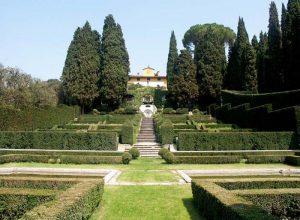 I Tatti, The Harvard University Center for Italian Renaissance Studies in Florence, Italy, warmly invites applications for the 2026–2027 academic year. We offer the following ten fellowships (n.b. deadlines vary): I Tatti, The Harvard University Center for Italian Renaissance Studies in Florence, Italy, warmly invites applications for the 2026–2027 academic year. We offer the following ten fellowships (n.b. deadlines vary):
Wallace Fellowship (four or six months; deadline November 15) for scholars who explore the historiography and impact of the Italian Renaissance in the Modern Era (19th-21st centuries). https://itatti.harvard.edu/wallace-fellowship
Berenson Fellowship (four or six months; deadline November 15) for scholars who explore « Italy in the World. » Projects should address the transnational dialogues between Italy and other cultures. https://itatti.harvard.edu/berenson-fellowship
Digital Humanities Fellowship (four or six months; deadline November 15) for projects that cut across traditional disciplinary . . . → En lire plus
Posté par Olivier Bonfait, le 29 septembre 2025;
- Date limite : 21 nov. 2025
 Appel à communications : « Situer le Nord : Circulations franco-nordiques (1870-1940) » (Paris, INHA, 10 avril 2026) Appel à communications : « Situer le Nord : Circulations franco-nordiques (1870-1940) » (Paris, INHA, 10 avril 2026)
Paris, Institut national d’histoire de l’art (INHA), Apr 10, 2026 Deadline: Nov 21, 2025
Argumentaire
Le « Nord », tantôt envisagé comme concept esthétique et historiographique dans l’histoire de l’art, tantôt comme réalité géographique, culturelle ou météorologique vécue par les artistes de la région, a longtemps fasciné les historien·ne·s de l’art. Désigné parfois sous le terme de « boréalisme » (Briens, 2016), il s’agit d’une construction mouvante dont la polysémie maintient les idées vagues d’un espace lointain au climat . . . → En lire plus
Posté par Olivier Bonfait, le 29 septembre 2025;
- Date et lieu du colloque : 7-9 octobre 2025, IMT Scuola Alti Studi Lucca, Cappella Guinigi
 Colloque : « Fortune et infortune des polyptyques. Provenances, reconstructions, restitutions » (Lucques, 7-9 octobre 2025). Colloque : « Fortune et infortune des polyptyques. Provenances, reconstructions, restitutions » (Lucques, 7-9 octobre 2025).
Fortuna e sfortuna dei polittici. Provenienze, ricostituzioni, restituzioni Polyptychs’ Fortune and Misfortune. Provenance, Reconstruction, Restitution. Fortune et infortune des polyptyques. Provenances, reconstructions, restitutions
This conference addresses the dismantling and reconstruction of altarpieces, encompassing diverse centuries, geographical areas, and artistic techniques. It explores the historical dynamics, shifts in taste, fluctuations in market demand, and evolving practices of art preservation and management that have shaped the lives of these complex works of art. The conference also addresses the need for a collective reflection on . . . → En lire plus
Posté par Elsa Jamet, le 3 septembre 2025;
- Date et lieu du colloque : 26-27 septembre 2025, Paris
 Colloque international : « Les femmes et l’économie des arts : commerce et financement au féminin en France (fin XVIIe siècle – 1945) » (Paris, INHA, salle Vasari, 26-27 septembre 2025) Colloque international : « Les femmes et l’économie des arts : commerce et financement au féminin en France (fin XVIIe siècle – 1945) » (Paris, INHA, salle Vasari, 26-27 septembre 2025)
À la croisée de l’histoire de l’art, de l’histoire des femmes et de l’histoire économique, ce colloque propose de s’interroger sur la place des femmes dans les mécanismes de financement de la production et de la diffusion des arts en France (peinture, sculpture, architecture, arts décoratifs, estampe, photographie, etc.). La chronologie envisagée, très étendue, permet de s’interroger sur les permanences et les mutations de leur implication sur le . . . → En lire plus
Posté par danguy, le 3 septembre 2025;
- date limite des propositions : 15 septembre 2025
Appel à contributions : « Voyance et divination » (Revue Sociétés & représentations, 2027)
Revue Sociétés & représentations, n° 63, 2027Sous la direction de Laurence Danguy et Sylvain Ledda« Du latin divinatio, deviner, le terme « divination » désigne l’action qui se donne pour objectif de deviner, prévoir et/ou influencer une réalité cachée, à l’aide de la lecture d’éléments ou présages, selon une technique particulière impliquant leur observation ou leur manipulation. Ainsi définie, la divination apparait comme une pratique universelle des sociétés humaines ». La notice « divination » du Dictionnaire des faits religieux de Régine Azria et Danièle Hervieu-Léger se fonde sur des invariants structurels pour sa définition. Que les notices « divin » et « divination » se suivent dans cet ouvrage de référence pour . . . → En lire plus
Posté par Olivier Bonfait, le 3 septembre 2025;
- Date limite : 15 octobre 2025
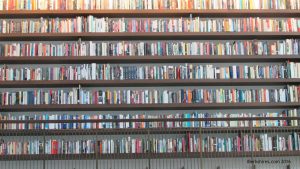 FELLOWSHIPS AT THE CLARK
Fellowships are awarded every year to established and promising scholars with the aim of fostering a critical commitment to inquiry in the theory, history, and interpretation of art and visual culture. As part of our commitment to cultivating diverse engagements with the visual arts, RAP seeks to elevate constituencies, subjects, and methods that have historically been underrepresented in the discipline. Furthermore, we are particularly committed to supporting scholarship that reveals the systemic inequalities of art history as a discipline and challenges us to address these inequalities as we move forward differently. All fellowships . . . → En lire plus
Posté par Olivier Bonfait, le 3 septembre 2025;
 Frédéric Cousinié, Alterimages. Armoiries et Madonnelle du Baroque romain, Paris, Classiques Garnier, « Lire le XVIIe siècle », 2025, 325 p., 106 ill. N& B, 39 euros, ISBN : 978-2-406-18239-9. Se procurer l’ouvrage sur le site de l’éditeur : https://classiques-garnier.com/alterimages-armoiries-et-madonnelle-du-baroque-romain.html Frédéric Cousinié, Alterimages. Armoiries et Madonnelle du Baroque romain, Paris, Classiques Garnier, « Lire le XVIIe siècle », 2025, 325 p., 106 ill. N& B, 39 euros, ISBN : 978-2-406-18239-9. Se procurer l’ouvrage sur le site de l’éditeur : https://classiques-garnier.com/alterimages-armoiries-et-madonnelle-du-baroque-romain.html
Résumé
Alterimages sont des images autres, jouant sur des indistinctions catégorielles (architecture, peinture, sculpture, ornement, écriture), confondant matériaux, acteurs, pratiques et genres artistiques. Ce sont aussi des images alternatives, parfois critiques, dotées d’un pouvoir d’altération, voire de défiguration, à l’égard aussi bien de leurs espaces d’inscription que des valeurs idéologiques qu’elles sont censées promouvoir. Ce livre, centré sur la Rome baroque du XVIIe siècle, porte sur . . . → En lire plus
Posté par Olivier Bonfait, le 3 septembre 2025;
- Date limite : 15 octobre 2025
The Jacqueline Lichtenstein CFHA-CLARK FELLOWSHIP
Posté par Olivier Bonfait, le 29 août 2025;
- Date et lieu du colloque : 30 sept.-1er oct., Rome, Accademia Belgica
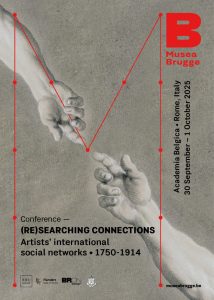 (Re)searching connections. Artists’ international social networks (1750-1914)
Musea Brugge is pleased to announce the upcoming conference ‘(Re)searching connections’, which will provide a forum for scholarly exchange about the international social networks of artists active in the period 1750–1914. The conference will be held in Rome, Italy, on 30 September and 1 October 2025. Registration is now open.
About the conference Dates: Tuesday 30 September and Wednesday 1 October 2025 Location: Academia Belgica, Via Omero 8, 00197 Rome, Italy Organizers: Musea Brugge in collaboration . . . → En lire plus
Posté par Olivier Bonfait, le 29 août 2025;
- Date limite : 30 sept. 2025
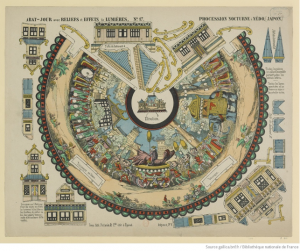 “Découper suivant les pointillés”: images manufacturées à manipuler (XVIIIe-XXIe siècles) “Découper suivant les pointillés”: images manufacturées à manipuler (XVIIIe-XXIe siècles)
Colloque international Organisation: Johanna Daniel, Université Lyon 2 – LARHRA, Hélène Valance, INHA – InVisu
Paris, Institut National d’Histoire de l’Art 31 mars-1er avril 2026
(English version below)
Découpé, plié, piqué, brodé, collé, ou animé par des jeux de transparence, le papier, matière aussi fragile qu’omniprésente dans le quotidien, est un support de créativité autour duquel s’articulent une multitude de savoir-faire. Travaillée par tous ces gestes, l’image imprimée sur le papier quitte le monde des surfaces planes pour affirmer sa matérialité : les « petites constructions » commercialisées par l’imprimerie Pellerin à Epinal à la fin du XIXe . . . → En lire plus
Posté par Olivier Bonfait, le 28 août 2025;
- Date limite : 22 septembre
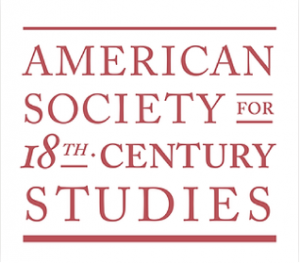 Annual Meeting of the American Society for Eighteenth-Century Studies, Annual Meeting of the American Society for Eighteenth-Century Studies,
April 9-11, 2026 in Philadelphia https://asecs.org/2026-annual-meeting/
Call for proposals – Deadline September 22, 2025
Session : Lighting the Enlightenment. Artificial Light and the Transformation of Cultural Practices (ID 220) Co-chairs : Sophie Raux, Université Lumière Lyon 2, LARHRA, sophie.raux@9online.fr; and Marie Thebaud-Sorger, CNRS, Centre Alexandre-Koyré Paris, marie.thebaud-sorger@cnrs.fr
The renewal of theories of light in the eighteenth century, alongside the development of practices and uses related to the economy of lighting—such as lamps—contributed to shaping a metaphorical understanding of luminous phenomena within the broader discourse of rationalization that characterized the aptly named Age of Enlightenment.
Artificial light . . . → En lire plus
Posté par Olivier Bonfait, le 15 juillet 2025;
 L’Atelier de la grâce par Anne-Marie Lecoq et Alain Mérot, Paris, Editions Le Passage, 20025. L’Atelier de la grâce par Anne-Marie Lecoq et Alain Mérot, Paris, Editions Le Passage, 20025.
Pages : 504 320 illustrations Format : 19,7 × 25 cm ISBN : 978-2-84742-521-5
Faveur divine mystérieusement accordée aux mortels – tel le don du printemps, toujours immérité et toujours renouvelé –, la grâce est douceur, clarté, fluidité, légèreté. Associée à la jeunesse, elle vient animer la beauté, elle est la vie même. Chaque grande époque lui a apporté de nouveaux caractères : fécondité et lumière pour les anciens Grecs, nécessité du lien social et de l’amitié chez les Romains, charité et visions paradisiaques au . . . → En lire plus
Posté par Olivier Bonfait, le 15 juillet 2025;
- Date limite : 15 aout 2025
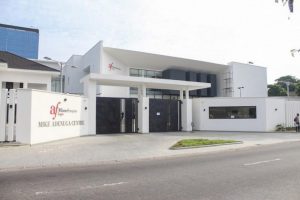 Re:assemblages Symposium
Alliance Française de Lagos, Lagos, Nigeria, Nov 4–05, 2025
Provocation: What does it mean to think with African and Afro-diasporic art archives as living, contested, and future-shaping spaces?
The 20th century can be read as a formative ecotonal space—an unsettled, generative borderland where networks fractured and reformed, collaborations ignited, and tensions gave way to new modes of relation. Within this compressed terrain, distinct ecologies of African and Afro-diasporic thought and practice took shape, producing postcolonial libraries, and archives that carried with them emergent aesthetic and epistemic registers—unfinished, insurgent, and alive with possibility.
Marking the inaugural symposium of the Re:assemblages programme, this two-day . . . → En lire plus
Posté par Olivier Bonfait, le 15 juillet 2025;
- Date limite : 1er octobre 2025
 Getty Library Research Grant applications for calendar year 2026 are now online! Getty Library Research Grant applications for calendar year 2026 are now online!
The Getty Library offers short-term grants for researchers, providing partial support for travel to the Getty Research Institute in Los Angeles to use our collections.
In addition to the open call for applications, the following focused grants are available:
• The Whitney and Lee Kaplan African American Visual Culture Library Research Grant supports research that uses an encyclopedic and interdisciplinary collection of published works related to African American art.
• The Anne Willan and Mark Cherniavsky Gastronomy Collection of Rare and Contemporary Books Library Research Grant supports projects that use the collection to research culinary history and the visual culture, preparation, and presentation of food.
• . . . → En lire plus
Posté par Olivier Bonfait, le 15 juillet 2025;
- Date limite : 15 février 2026
15th Annual REFORC Conference on Early Modern Christianity: « Early Modern Christian Materiality », Wrocław, May 19-21, 2026.
At the time of the Reformation, new ways of perceiving bodiliness and materiality began to reshape Western thought, particularly in relation to the understanding of the Incarnation and the Eucharist. In a sharp critique of medieval Aristotelianism, especially the doctrine of transubstantiation grounded in Aristotelian hylomorphic theory, the Reformers developed new understandings of Christ’s presence, the Holy Spirit, human being, and the material world. While these reinterpretations varied among the different reformers, they commonly marked a departure from medieval theological frameworks and opened the door to (re)configurations in how materiality was understood, experienced, and practiced. The reconfigured understanding of the sacraments had a substantial influence on liturgy and, consequently, also . . . → En lire plus
Posté par Olivier Bonfait, le 14 juillet 2025;
- Date limite : 31 aout 2025
 Le Musée et le Sacré Le Musée et le Sacré
Les Cahiers de l’École du Louvre n° 25
Appel à contributions
La question du sacré au musée relève de préoccupations très actuelles, mais elle s’ancre dans l’histoire même du musée comme institution – le Museum est sanctuaire des muses. Dès le XVIIIe siècle, plusieurs musées européens sont logés dans un bâtiment en forme de temple. Aujourd’hui, plusieurs courants tendent au contraire à repenser cette association, et préfèrent qualifier le musée de forum, de lieu de dialogue. Il s’agira tout d’abord de réfléchir à la manière dont l’histoire de l’architecture muséale reflète cette tension entre des modèles opposés. . . . → En lire plus
Posté par Olivier Bonfait, le 30 juin 2025;
- Date limite : 30 septembre 2025
A History of Textile Cleanliness: Washing and Perfuming Fabrics from the Medieval to the Modern Period.
In 2024, the Sleeping Beauties exhibition at the MET (New York) engaged visitors in the museum experience by recreating the displayed dresses’ scents – identified through chromatographic analysis – to illuminate their history and relationship to bodily senses. The analyses and interpretations published in the catalogue reveal not only the presence of perfumes but also traces of cosmetics, sebum, polluted air, and wine, among other aromas. While the poetic resonance of these sensory traces may evoke the ephemeral existence of these garments, their scents have not always been perceived as desirable. On the contrary, the history of textiles and clothing is deeply intertwined with practices of washing, stain removal, . . . → En lire plus
|
Équipe Rédacteur en chef : Olivier Bonfait.
Rédacteurs : Elliot Adam (Moyen Age) ; Nicolas Ballet (XX-XXIe siècles) ; Matthieu Fantoni (musées) ; Antonella Fenech Kroke (bourses) ; Vladimir Nestorov (Lettre mensuelle)
Administrateur web : Matthieu Lett.
ancien éditeur : Pascale Dubus
anciens rédacteurs : Gautier Anceau, Sébastien Bontemps, Damien Bril ; Sébastien Chauffour ; Ludovic Jouvet ; Aude Prigot
|
 21e congrès international Danses macabres Europe : « La Danse macabre des Saints-Innocents, 1425-2025 ». Sources, contexte, postérité » (Paris, 1er-4 octobre 2025)
21e congrès international Danses macabres Europe : « La Danse macabre des Saints-Innocents, 1425-2025 ». Sources, contexte, postérité » (Paris, 1er-4 octobre 2025)













